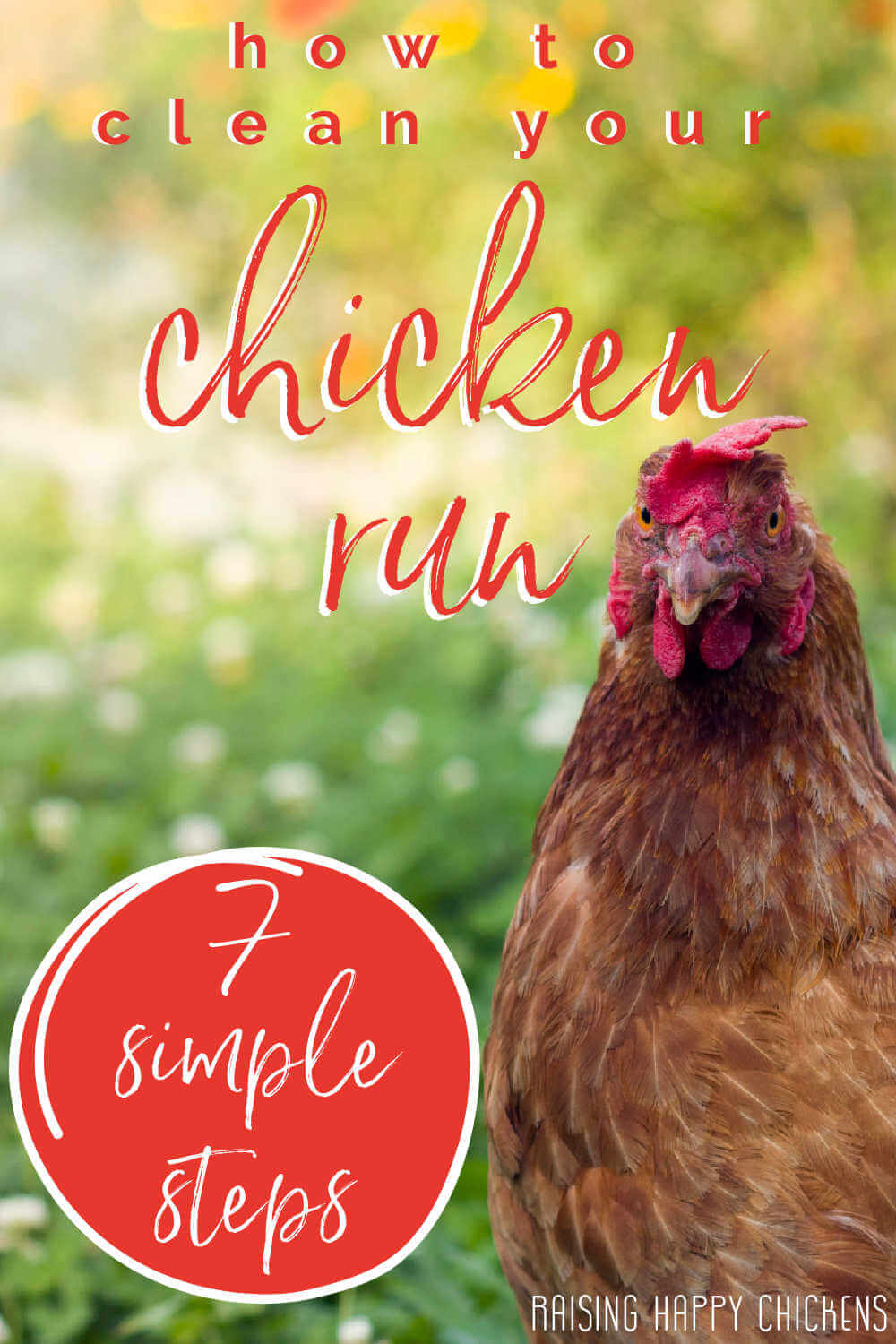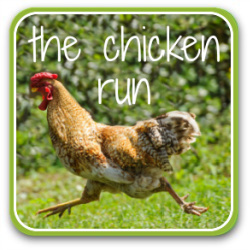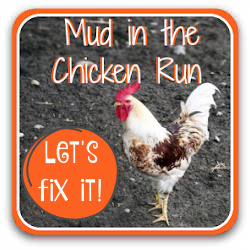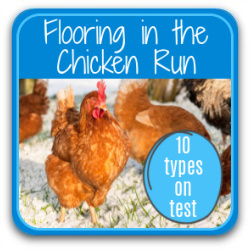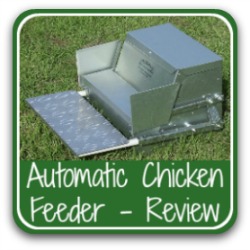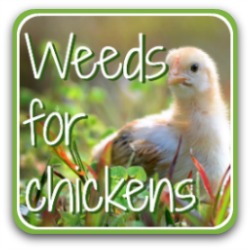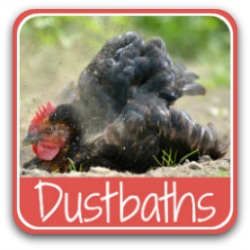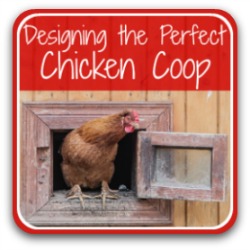- Home
- Chicken runs
- Cleaning
Keeping a chicken run clean in 7 easy steps.
Everyone knows a chicken coop must be kept clean for chickens to remain safe and healthy. But what about the run?
It's easy to forget that the chicken run can harbour unwanted pests, bacteria, plants and weeds.
And, at a time when Avian Influenza (bird flu) has spread across the world, it's even more important to keep the outside space the flock uses as healthy an environment as possible.
So what must be done to be sure you are keeping your chicken run clean?
The steps in this article are based on government and research findings. Following them will help ensure that your run and your chickens are protected as far as possible.
There are seven different parts of the run which will need your attention:
- Prevent access to waterfowl
- Prevent access to wild birds
- Keep food protected
- Sanitise hard areas
- Cleanse the land
- Keep shelters and dust baths safe
- Provide sanitary measures for people.
Click on any of the above links to jump straight to that section.
How often should the run be cleaned?
At least twice a year, and at any other times when the risk of contamination is high, such as periods where Avian Influenza (bird flu) is spreading.
It becomes particularly important if your chickens have had to be contained inside their coop for any length of time, since lack of daily care can mean a build up of bacteria, viruses and fungi.
Bird flu (avian influenza) and the chicken run.
Before we start looking at those areas, let's deal with the subject of Avian Influenza (bird flu). The way it's transmitted should guide our cleaning methods.
Bird flu is global. It is most common in Asia, Europe and the United States, but it is now seen in most parts of the world.
The disease is spread between birds (including chickens) from wild birds – mainly, but not exclusively, migrating waterfowl.
The virus which causes Avian Influenza can remain in any contaminated material for up to 50 days – longer in wet conditions(1). Its effects on poultry are fatal. If even one bird in a flock is found to be contaminated, the entire flock must be euthanised.
For that reason alone, it is critically important that outside areas are kept clean and safe.
For more detail about the symptoms and requirements of bird flu, follow this link.
Step 1: Make the run less attractive to waterfowl.
Because bird flu is known to be most often spread by migrating waterfowl, it makes sense to ensure that your run, and any other areas where your chickens free range, are unattractive to them.
Birds such as geese, ducks and swans are all attracted by any form of water, large or small, so there is an increased risk to chickens unless you take steps to reduce their access.
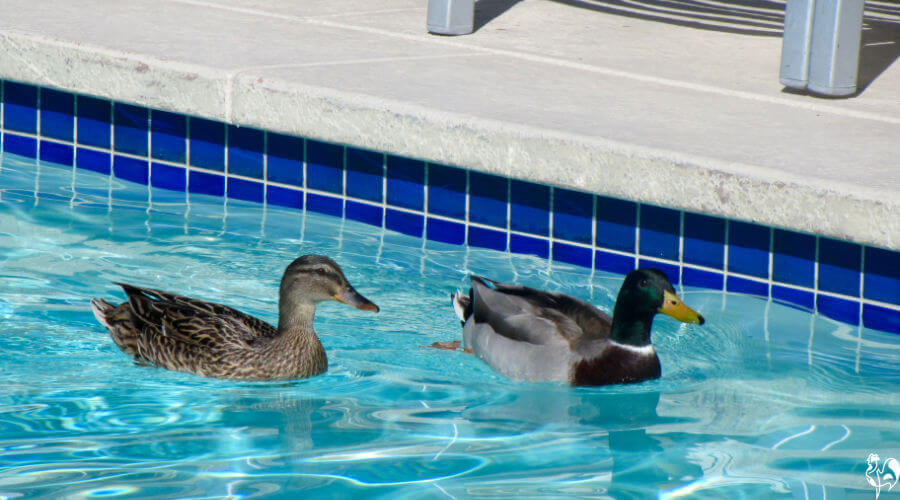 Got a swimming pool? Waterfowl will take advantage unless you cover it!
Got a swimming pool? Waterfowl will take advantage unless you cover it!How to keep a chicken run safe from waterfowl.
- If you have a pond or pool, cover it so that waterfowl cannot land. Ponds can be easily covered with netting.
- If you have water based areas on your land such as streams, canals or bogs which cannot be covered, provide fencing so that your chickens are not able to access it. UK guidelines suggest also to deal with any such areas within 100 metres of the perimeter(1).
- Deal with any standing water by providing drainage. If that's not possible, make sure it is fenced so that your chickens cannot gain entry. As well as waterfowl, standing water attracts bacteria and insects such as flies and mosquitoes, which can also bring disease to your flock.
- A contained run is the easiest way to stop poultry and wtaerfowl mixing. Make sure to check the mesh from time to time and repair any damage.
Step 2: Prevent wild birds having access to the run.
Whilst many of us want to attract more wild birds into our gardens to counteract their depletion by chemicals and intensive farming, it's also important that we protect our flock.
 Wild birds on feeders are fascinating to watch, but place them away from the run.
Wild birds on feeders are fascinating to watch, but place them away from the run.Wild birds, in particular members of the crow family (including magpies) and gulls, can spread disease in faeces and feathers.
So it's time to review your run and make it less attractive to wild birds.
Keeping a chicken run clean from wild bird contamination.
- Remove any wild bird feeders and re-site them 50 metres or more away from the chicken run.
- Check your run for bushes and plants which may attract wild birds: berries and grain, for example. If possible, cover them until harvest time.
- If you provide your chickens with a seed blocks, either hang them inside the coop or in a sheltered area where wild birds cannot access them easily.
- Reviewing ways of keeping birds of prey away from your chickens can work equally well for other wild birds. See these articles for more details.
Step 3: Don't make your run into a fast food take-away!
Feeding your chickens outside with an open style of feeder is a sure way to attract not only wild birds, but rodents.
This was a feeder I used before I learned the hard way. My run and coop ended up with three separate rats' nests – they looked on the feeder as an open house for grain, as did the wild birds.
Read my rat story here, along with how I solved the problem.
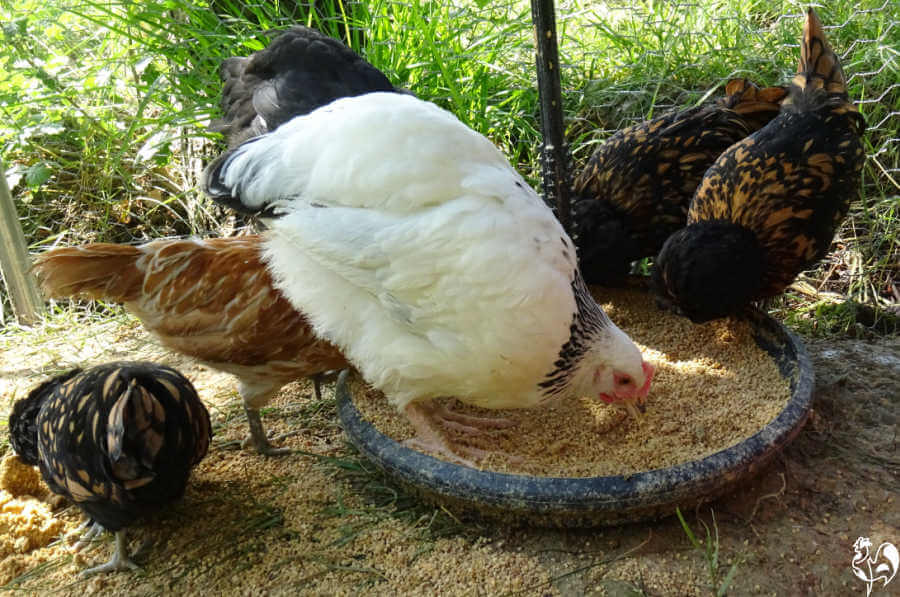 Open feeders are a sure way of attracting wild birds and rodents.
Open feeders are a sure way of attracting wild birds and rodents.Not only was I potentially attracting disease, they ate me out of house and home! It was an expensive lesson.
Keeping food protected in the chicken run.
- Keep all feeders and food bins securely covered and make sure lids cannot be easily knocked off. If they can, secure them with a bungee or put a heavy stone on top.
- Clear up any spilled food, particularly grain, every day.
- Consider investing in an automatic treadle feeder, which only opens when a chicken stands on the platform.
- For my detailed review of Grandpa's automatic feeder, which I used to solve my grain problem (photo below), see this article.
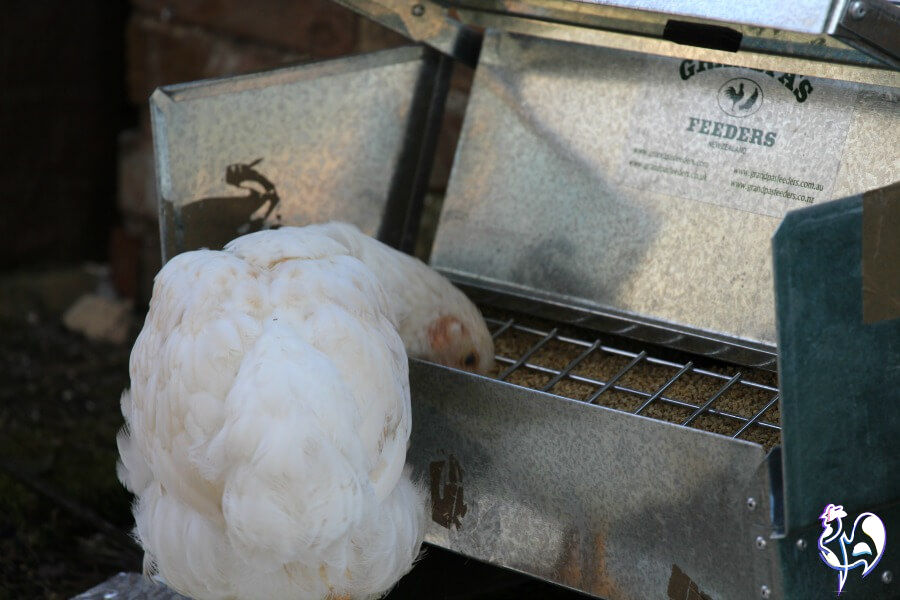 I rely heavily on my Grandpa's automatic chicken feeder.
I rely heavily on my Grandpa's automatic chicken feeder.If you purchase a product through links on this page, I may receive a small commission at no extra cost to you. I only recommend products I have bought (or would buy) myself, and which I believe will genuinely benefit you. You can read my full disclosure policy here.
Step 4: Sanitise hard standings.
It's an easy place to start a deep-clean, because wild bird droppings and feathers are easily seen on hard areas such as concrete and brick.
So check your run for any solid sections and clean them first.
Be especially vigilant if the area hasn't been used for chickens for a while (or ever). Remember: viruses can remain active for 50 days or more. Some bacteria (such as E.coli, which can be transmitted through droppings) will survive for more than 60 days on hard surfaces, rising to 130 days in soil(2).
How to keep watertight areas free from disease.
- Clear concrete, bricks and any other hard surfaces of faeces and feathers, and sweep with a hard yard brush before swilling down and cleaning with a disinfectant wash.
- A high quality disinfectant such as Oxine is recommended for jobs like this. Less toxic than bleach, it nevertheless has the capacity to kill a broad spectrum of bacteria, viruses and fungi, including bird flu.
- Make sure to avoid polluting water sources, particularly streams, by diverting any "runoff" away.
- Don't apply heavily concentrated disinfectant near the chickens' drinking water.
Step 5: The land.
It's not a difficult job to make sure that our chicken run itself is well maintained, but it's something we often just forget to do.
Research has found that keeping the area is well managed – which means kept clean, free from poop, discarded items and general mess – makes a substantial difference to the levels of harmful bacteria.
In other words, good husbandry ensures that beneficial bacteria are retained in the ground, while those bacteria which are resistant to antibiotics and introduce disease are at least minimised and, if cleaning is carried out consistently, can be eradicated altogether(4).
So, if you do nothing else in your run, make sure that you put these simple steps into action at least once each week.
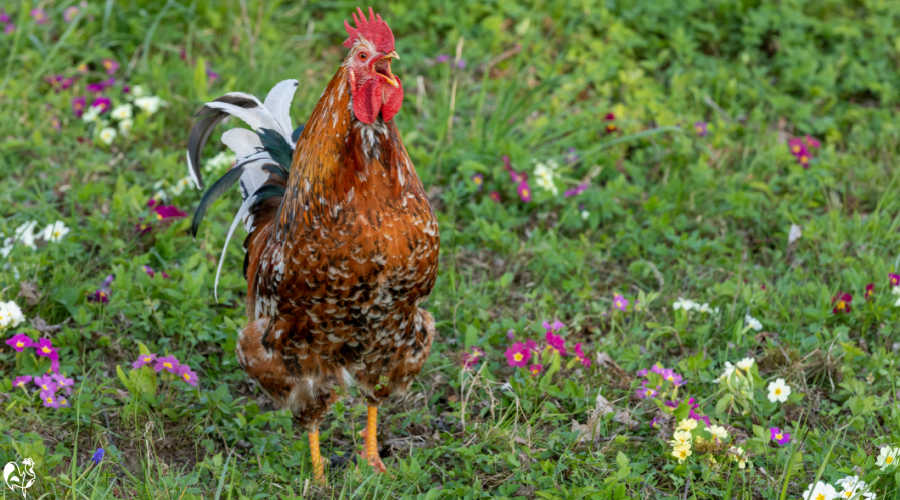 Keeping the run clean and sanitised can help eradicate harmful bacteria.
Keeping the run clean and sanitised can help eradicate harmful bacteria.How to make sure land in the chicken run is clean and safe.
- Drain or section off any wet patches or areas where water is standing. See this article about how to deal with a muddy run for more detail.
- If you're planning a new area for a run, try to make sure at least part of it is in the sunshine for at least part of the day. If you have an established run, cut back trees and bushes were necessary to allow sunlight in, whilst making sure your flock also has access to shaded areas when temperatures soar.
- Keep grass short to minimise the likelihood of impacted crop, and to ensure that rodents, predators and other pests have no place to hide. Rats in particular love nothing more than long undergrowth to run in.
- Rake or hoe the area to clear out droppings, feathers, rotting wood and any other undesirable elements which may be hiding in nooks and crannies. If necessary, hose areas where large amounts of poop have been allowed to collect.
Step 6: Keep shelters, dust baths and other extras safe.
Chicken runs often contain "extras" our flock needs to enhance their quality of life: shelters to protect them from extreme weather; dust baths to control mites and make sure feathers are kept in top condition; swings, mirrors, logs and other "toys" to help entertain and stave off boredom.
Check your run for all of these – you may have forgotten some!
Keeping chicken run extras clean and safe.
- Dust baths are essential for your chickens' well-being, but not if they become contaminated with droppings. Check and clean them out regularly, and cover at night or when your flock has to be kept inside.
- This is one of my dust-baths – a children's sandpit filled with soil. It has a top which can be used as a cover when it's not in use, particularly at night.
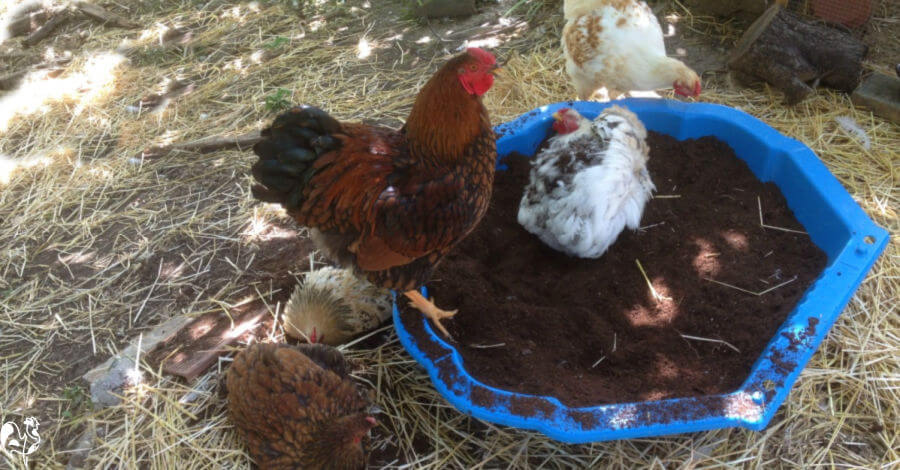 I use a children's sandpit for a dustbath – it has a top for cover when not in use.
I use a children's sandpit for a dustbath – it has a top for cover when not in use.- This article explains how to create a dust bath and what should go in it.
- Use a strong disinfectant wash to clean wooden or plastic shelters, swings and any other extras you provide.
- Wherever possible, give shelters a sloping roof to avoid wild birds gathering on top.
- Keep "toys" in a covered box to protect from contamination.
Step 7: Make sure people don't spread disease.
It's fun to introduce visitors to our chickens, and allowing children to have contact can be an excellent way of teaching care for other living creatures as well as lessons about where food comes from.
All of which is fine, as long as basic hygiene procedures are met.
In particular, be careful if your visitors have been in contact with any other poultry or birds in the recent past. Disease can easily be carried from one flock to another.
Keeping people in your chicken run clean.
- Limit the number of people who access your run, particularly at high risk times such as when bird flu is circulating. At those times, only people essential to the care of your chickens should be allowed.
- If visitors have had contact with any other poultry or birds, politely ask them not to enter your run. Symptoms of disease are not necessarily obvious and humans can be carriers without realising.
- It may seem over the top, but providing a simple foot dip at the entrance to your run is a sensible idea. Use a strong disinfectant in a cat litter tray, for example. Dip shoes in it both when entering and leaving the run. Replace regularly.
- Disposable shoe coverings are another option, although they tend to tear easily and aren't reusable or recyclable, so not eco-friendly.
- Remember yourself! Always practice good hygiene, in particular changing your clothes and washing your hands when you've been doing any cleaning of the run or coop, and after having handled any of your chickens.
- Keep specific shoes or boots to wear in your run. Not only will you be able to make sure they're kept clean, your chickens will get to know (and love) them!
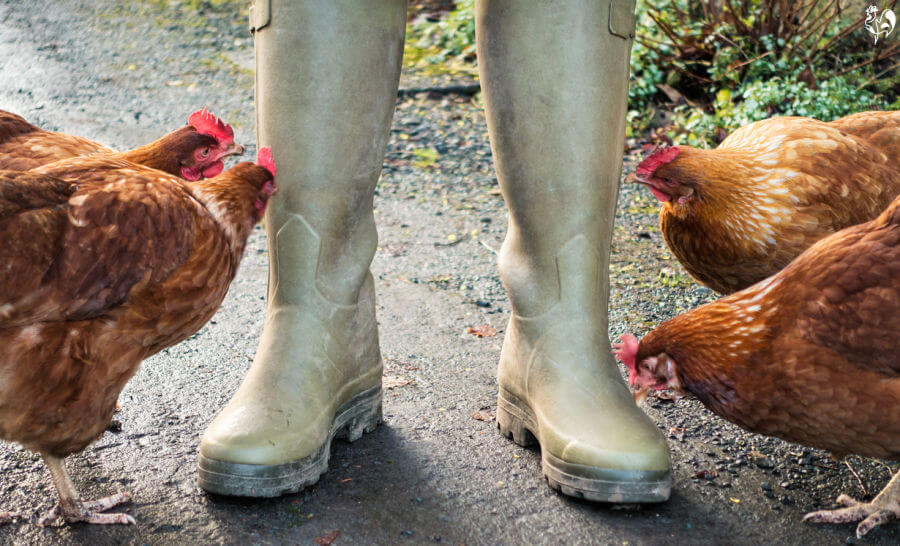 My girls love my green wellies!
My girls love my green wellies!Other pages you may find helpful.
Sources.
A lot of "facts" you'll find on the internet are often people's individual views, based on inaccurate information repeated from poor quality sources.
The information I provide in this article and others is based not just on my own experience, but on evidenced facts from scientific, peer-reviewed research and books from highly respected and experienced poultry keepers such as Gail Damerow.
Some of the trusted sources I have used in this article are these.
1. UK Governments: How to prepare for when your free-range birds can be let outside again. Pub. Department for the Environment, Food and Rural Affairs (DEFRA), 2022.
2. Cleveland clinic: E.coli infection. Pub. 2020.
3. RSPCA: Best environment for keeping pet chickens. Pub. Royal Society for the Prevention of Cruelty to Animals, 2022.
4. Crippen, T. et al: How Management Practices Within a Poultry House During Successive Flock Rotations Change the Structure of the Soil Microbiome. Pub. Frontiers in Microbiology, 2019.
- Home
- Chicken runs
- Cleaning
